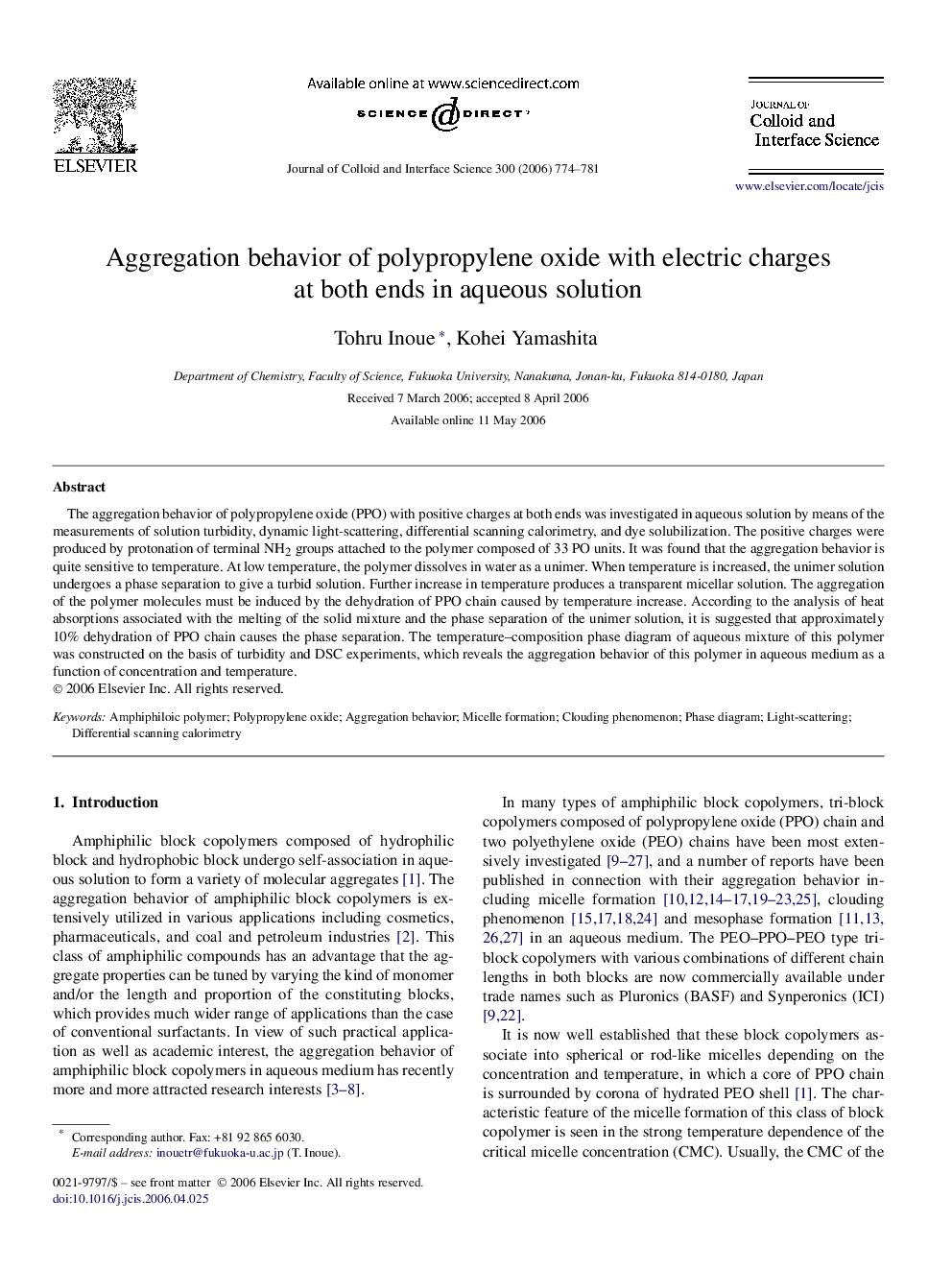| Article ID | Journal | Published Year | Pages | File Type |
|---|---|---|---|---|
| 613019 | Journal of Colloid and Interface Science | 2006 | 8 Pages |
The aggregation behavior of polypropylene oxide (PPO) with positive charges at both ends was investigated in aqueous solution by means of the measurements of solution turbidity, dynamic light-scattering, differential scanning calorimetry, and dye solubilization. The positive charges were produced by protonation of terminal NH2 groups attached to the polymer composed of 33 PO units. It was found that the aggregation behavior is quite sensitive to temperature. At low temperature, the polymer dissolves in water as a unimer. When temperature is increased, the unimer solution undergoes a phase separation to give a turbid solution. Further increase in temperature produces a transparent micellar solution. The aggregation of the polymer molecules must be induced by the dehydration of PPO chain caused by temperature increase. According to the analysis of heat absorptions associated with the melting of the solid mixture and the phase separation of the unimer solution, it is suggested that approximately 10% dehydration of PPO chain causes the phase separation. The temperature–composition phase diagram of aqueous mixture of this polymer was constructed on the basis of turbidity and DSC experiments, which reveals the aggregation behavior of this polymer in aqueous medium as a function of concentration and temperature.
Graphical abstractThe phase diagram of aqueous mixture of PPO with NH+3 groups at both ends was constructed, which reveals the aggregation behavior of this polymer as a function of concentration and temperature.Figure optionsDownload full-size imageDownload as PowerPoint slide
